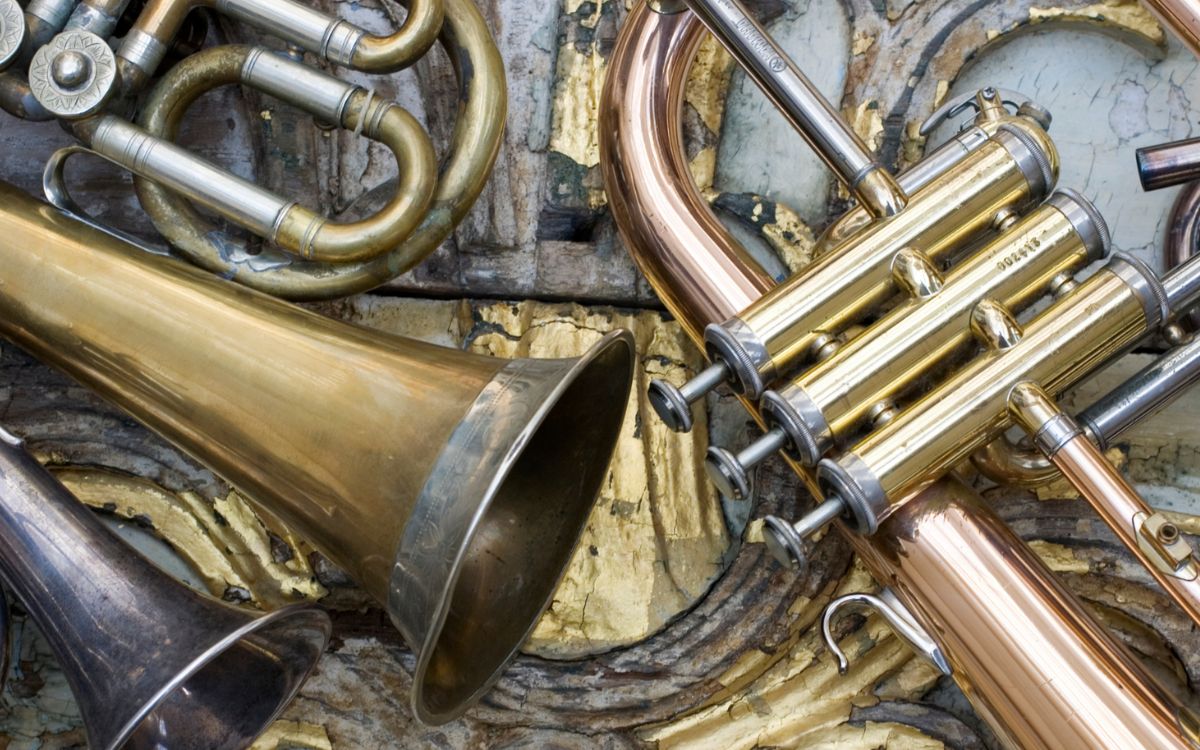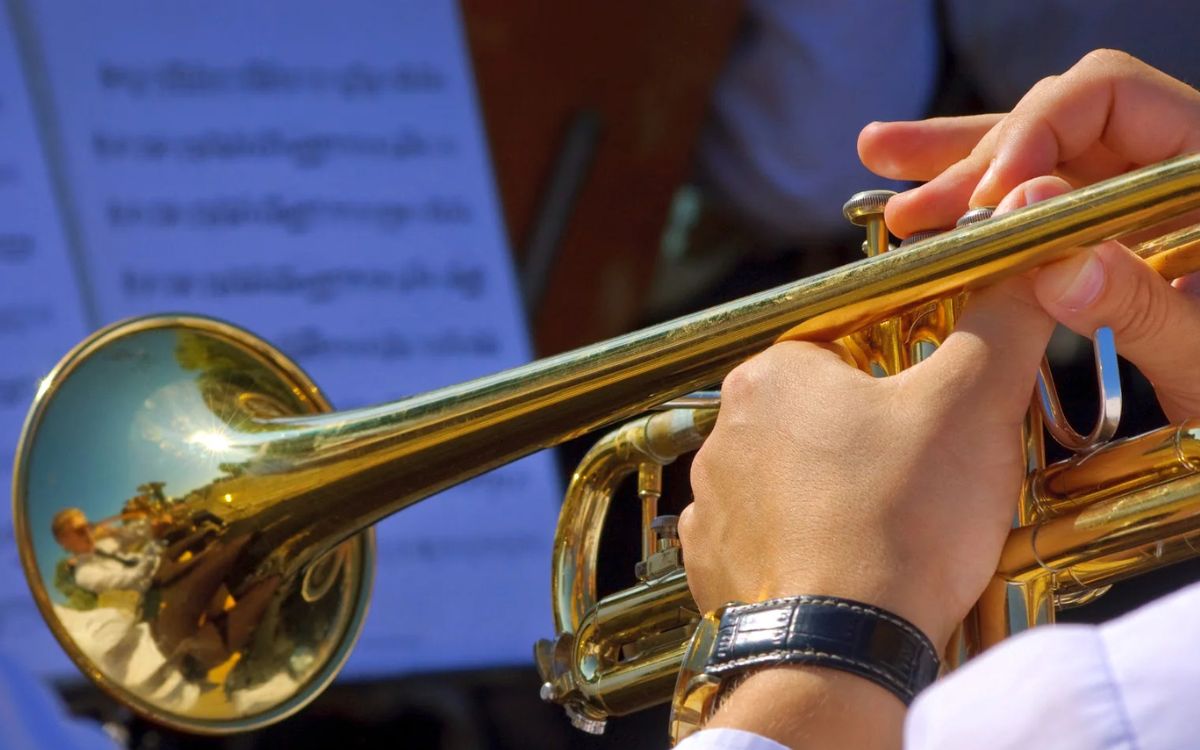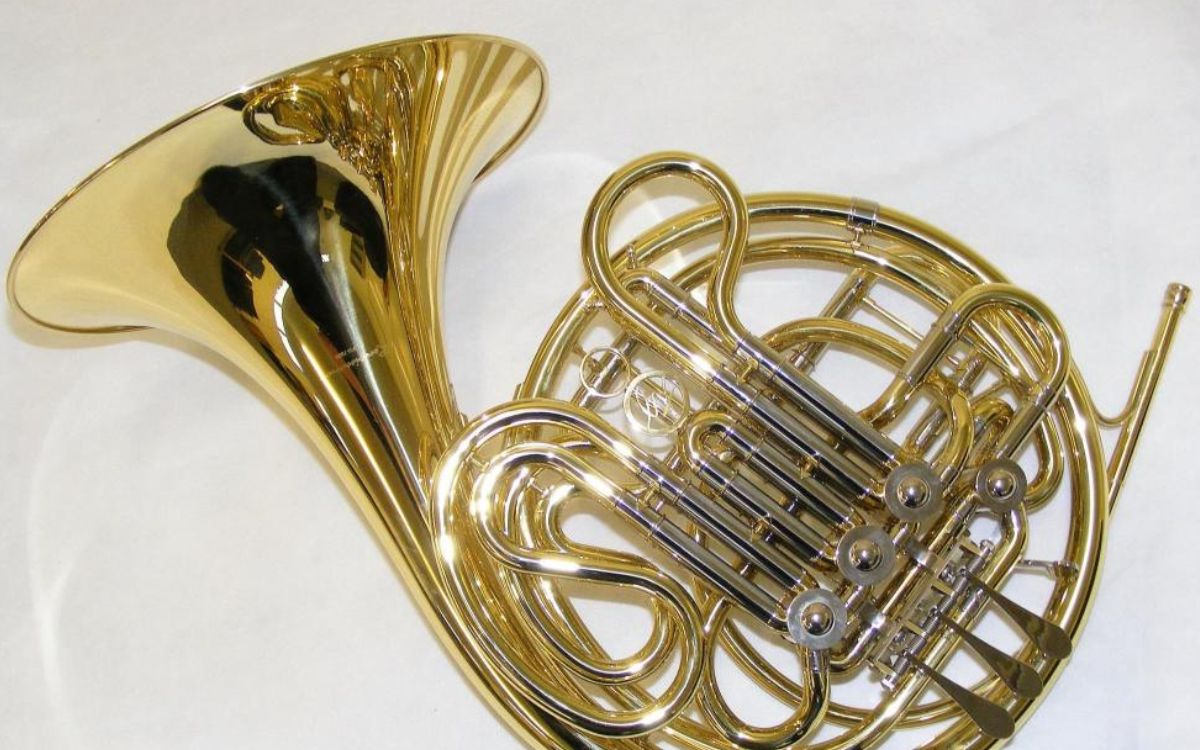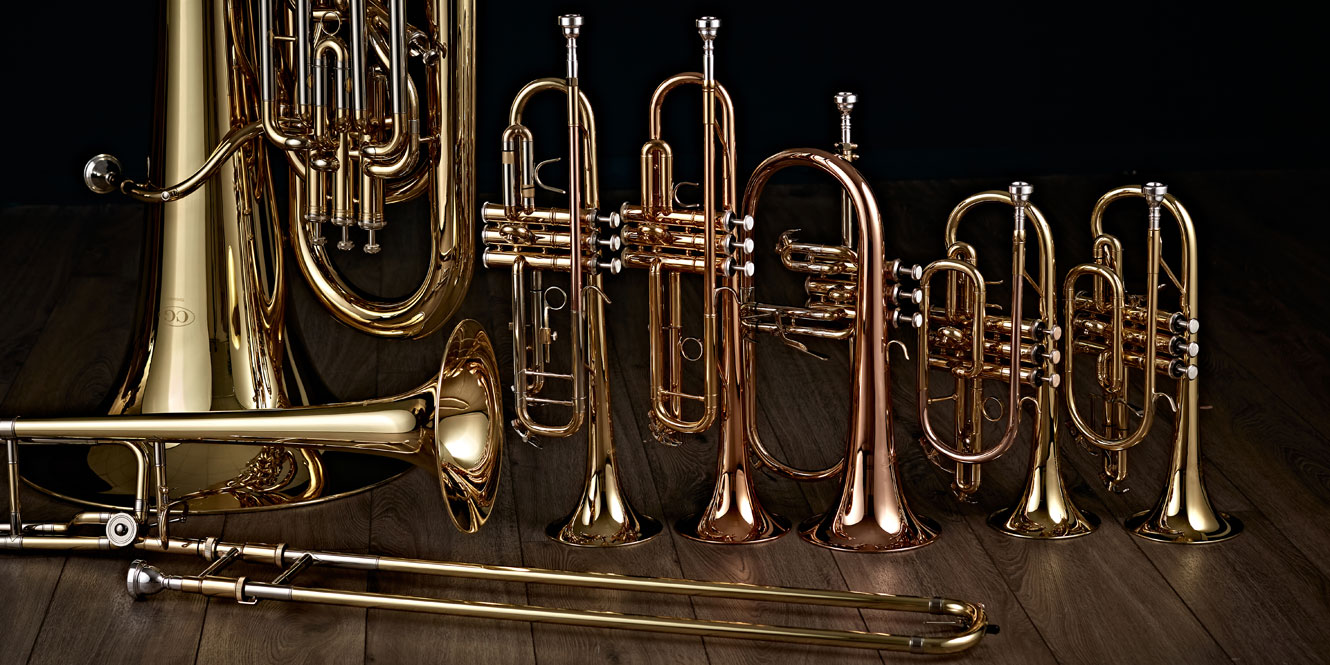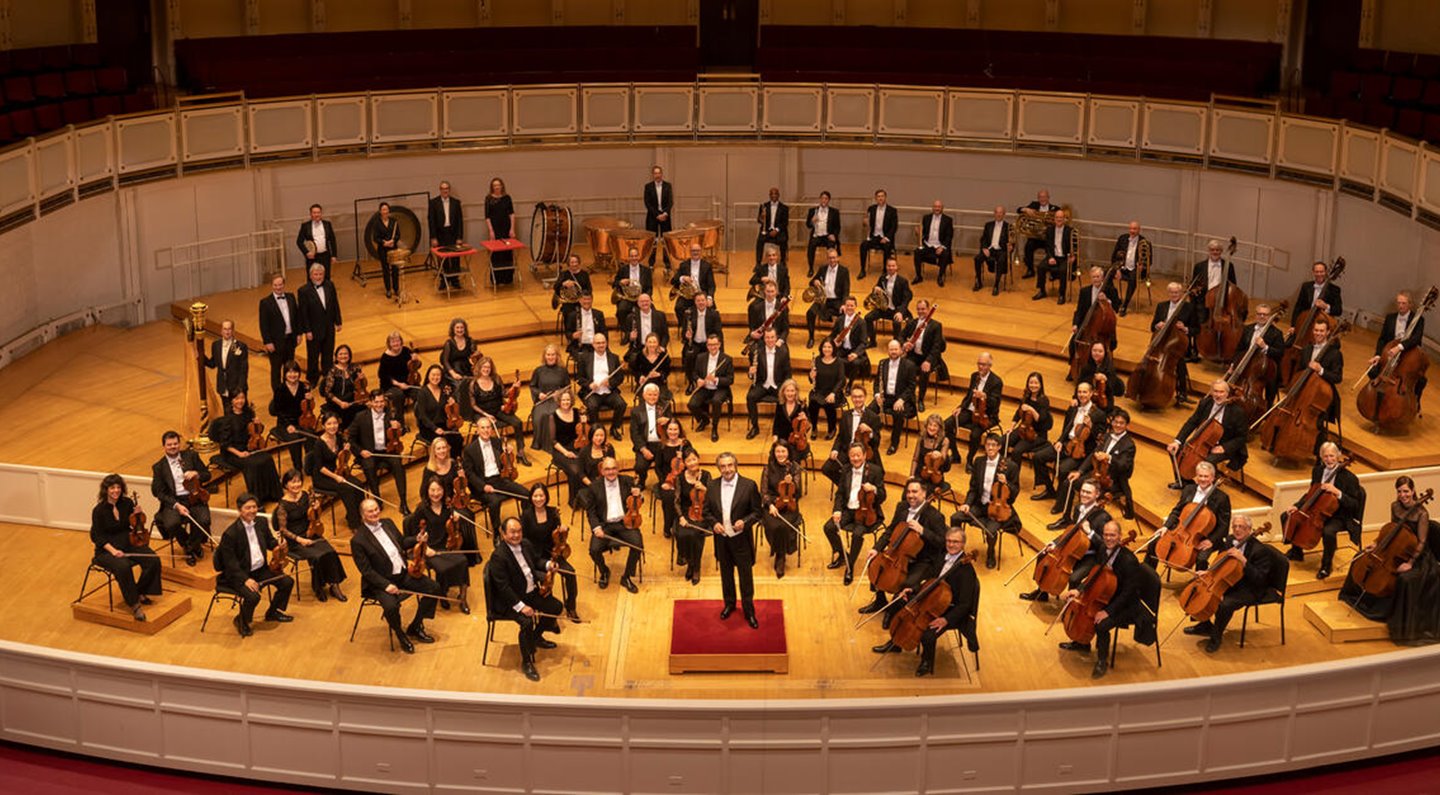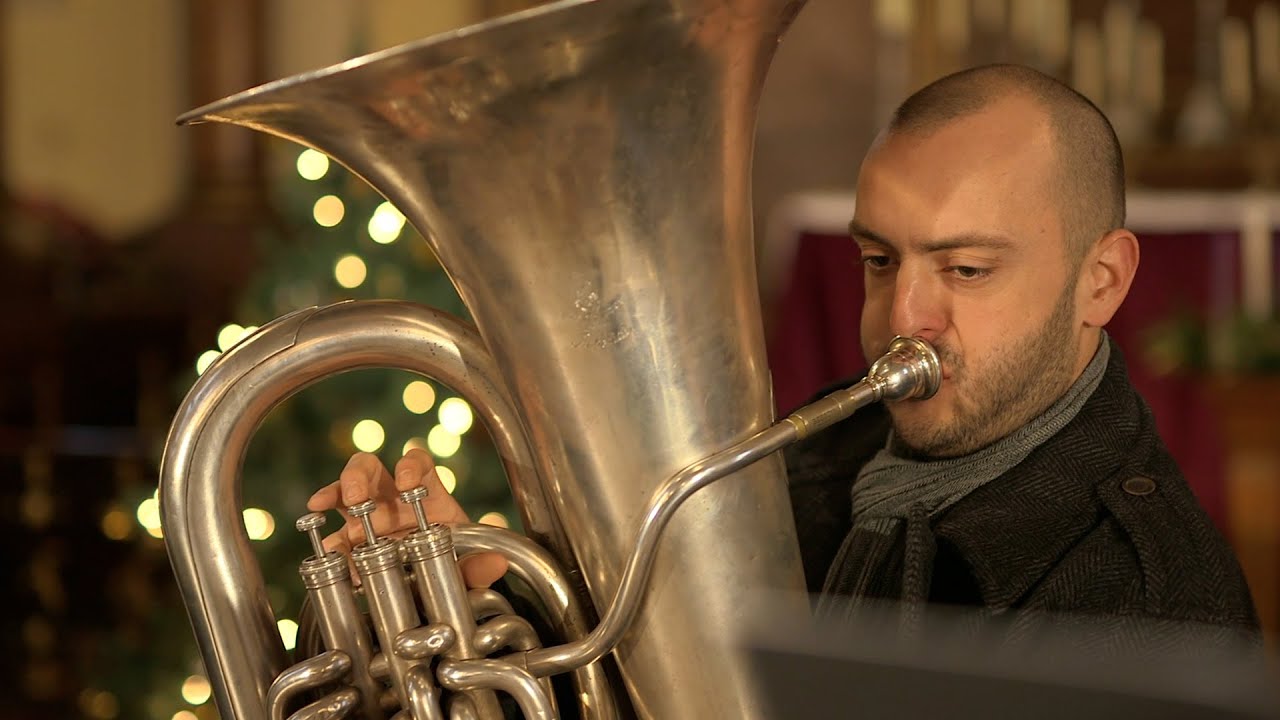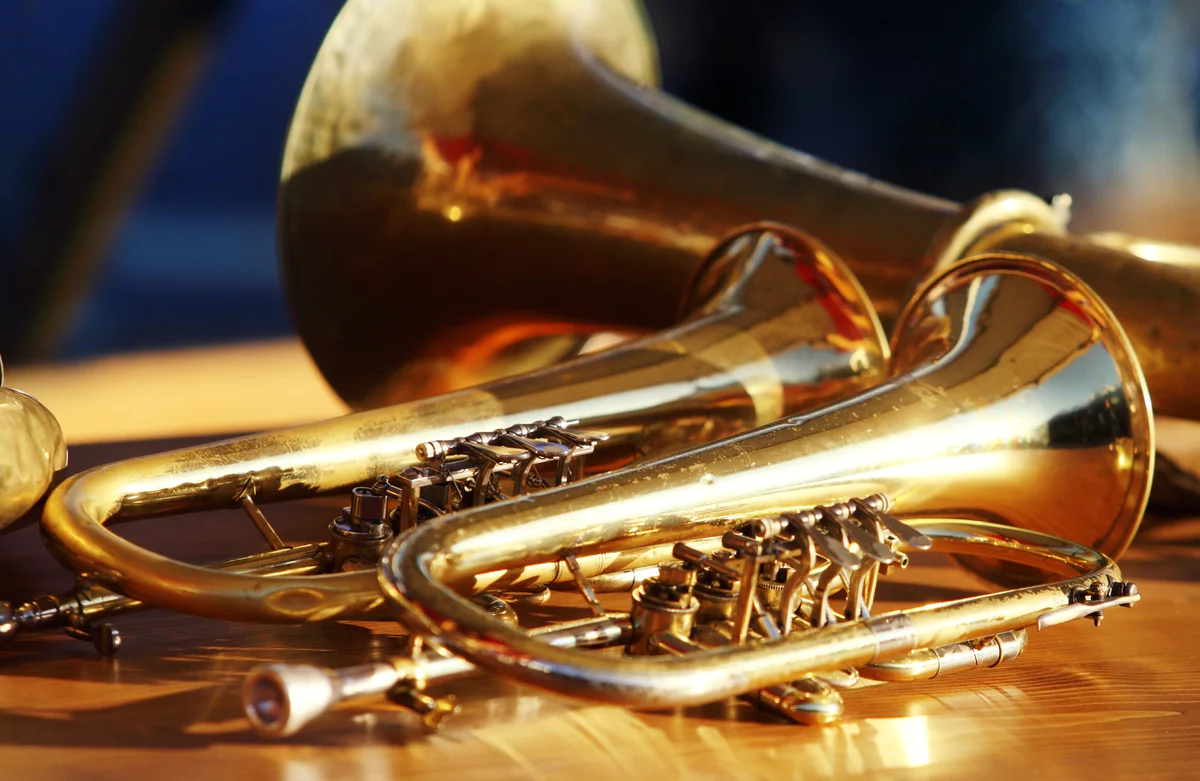Home>Instruments>Brass Instruments>How Many Of Each Brass Instruments Are There In An Orchestra
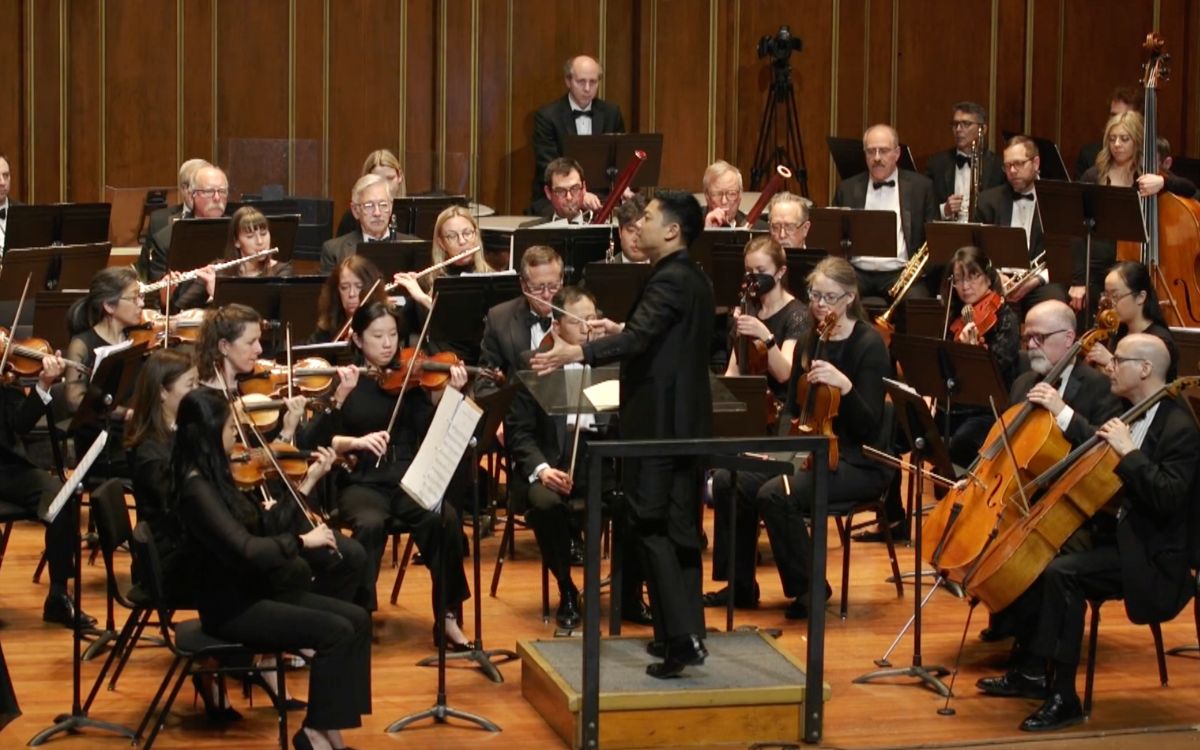

Brass Instruments
How Many Of Each Brass Instruments Are There In An Orchestra
Modified: February 24, 2024
Discover the variety of brass instruments in an orchestra and learn how many of each are typically used. From trumpets to tubas, explore the beautiful sound of brass.
(Many of the links in this article redirect to a specific reviewed product. Your purchase of these products through affiliate links helps to generate commission for AudioLover.com, at no extra cost. Learn more)
Introduction
Brass instruments are an integral part of the symphonic orchestra, lending their powerful and distinct sounds to the ensemble. From the bright and piercing tone of the trumpets to the warm and mellow resonance of the tubas, brass instruments add depth, texture, and color to the musical composition. Understanding these instruments and their roles is essential for any music enthusiast or aspiring musician.
In an orchestra, brass instruments are typically categorized into four main sections: trumpets, French horns, trombones, and tubas. Each of these sections has its own unique characteristics and plays a crucial role in shaping the overall sound of the orchestra.
Throughout this article, we will explore the different types of brass instruments found in an orchestra, their distinct qualities, and their significance in musical performances. Whether you’re a musician looking to expand your knowledge or simply a curious soul with a love for music, join us on this journey to discover the beauty and power of brass instruments.
Trumpets
When it comes to brass instruments, the trumpet is arguably the most well-known and recognizable. With its compact size and brilliant sound, the trumpet is often called upon to take center stage and play vibrant melodies or soaring solos.
Trumpets are typically made of brass and feature three piston valves that allow the player to change the instrument’s pitch. These valves, when pressed, redirect the airflow through different tubing lengths, enabling the musician to produce various notes. Additionally, trumpets can be made in different keys, with the most common ones being B♭ and C.
The trumpets’ bright and piercing sound makes them ideally suited for playing melodies that cut through the orchestral texture. They are often used to create fanfares, heroic themes, and virtuosic passages that display the player’s technical skill.
In a standard orchestra, there are usually two to four trumpets. Their role is versatile, shifting between playing lead lines, harmonizing with other brass instruments, and adding brilliance and articulation to the overall sound. Additionally, trumpets are frequently used to bring a regal and celebratory quality to orchestral compositions.
Trumpets also play a crucial role in jazz and popular music genres. Their piercing sound and agility make them adept at improvisation and performing syncopated and soulful melodies.
Overall, whether in classical, jazz, or popular music, the trumpet’s distinctive timbre and expressive capabilities make it a vital component of any ensemble, adding a touch of brilliance and excitement to the music.
French Horns
The French horn, often referred to simply as the horn, is a brass instrument known for its rich, warm, and versatile sound. With its bell-facing backward and its coiled tubing, the French horn’s unique design sets it apart from other brass instruments.
The French horn is played by placing the right hand inside the bell, which allows the player to control the pitch and tone quality. This hand placement gives the horn its signature mellow and velvety sound, making it a popular choice for playing lyrical and expressive passages.
In an orchestra, the French horn section typically consists of two to four players. They are responsible for playing a wide range of roles, from providing harmonic support to performing delicate melodies and enchanting solos. The French horns often add depth and character to the overall sound, filling in the harmonic gaps and adding a sense of grandeur to the music.
French horns are known for their ability to blend seamlessly with other brass and woodwind instruments, creating beautiful and sonorous harmonies. They are also recognized for their ability to mimic the sounds of hunting calls, making them a staple in compositions that evoke pastoral or natural imagery.
While French horns are prominently featured in classical music, they have also made their way into other genres such as film soundtracks and brass ensembles. Their unique sound and versatility have ensured their continued presence in both traditional and contemporary musical compositions.
Overall, the French horn’s distinctive sound and its ability to evoke a wide range of emotions make it an indispensable part of the orchestra, adding warmth, depth, and enchantment to the musical experience.
Trombones
The trombone is a brass instrument that is characterized by its slide mechanism, which allows the player to change the pitch by extending or retracting the length of the tubing. This unique feature gives the trombone its distinctively smooth and expressive sound.
Trombones come in different sizes, including the tenor trombone, bass trombone, and contrabass trombone. The tenor trombone is the most commonly used in orchestras and is easily recognizable by its long, straight slide. The bass trombone and contrabass trombone, with their larger bores and additional tubing, contribute to the lower register and provide a foundation of powerful low notes in ensembles.
Unlike other brass instruments with valves, the trombone’s slide mechanism offers players more flexibility and control over pitch and timbre. This allows trombone players to execute smooth glissandos, quick runs, and expressive vibrato, making the instrument well-suited for jazz solos and dynamic classical compositions.
In an orchestral setting, the trombone section typically consists of two or three tenor trombones and one bass trombone. The trombones often play a crucial role in providing harmonic support, adding depth and power to the overall sound. They are also frequently featured in melodic lines, often in combination with other brass or woodwind instruments, creating rich and resonant textures.
In addition to their orchestral presence, trombones are widely used in jazz, where they are valued for their ability to improvise soulful solos and add a touch of bluesy expressiveness. Their unique slide mechanism allows for smooth and seamless transitions between notes, providing a distinctive sound that is instantly recognizable.
Whether in a symphony orchestra or a big band, the trombone’s versatility, expressive capabilities, and rich tonal quality make it an essential instrument for bringing depth, power, and emotion to the music.
Tubas
The tuba is the largest and lowest-pitched instrument in the brass family. With its deep and resonant sound, the tuba serves as the foundation of the brass section, providing a powerful bass line and anchoring the overall ensemble.
Tubas come in various sizes, including the contrabass tuba, the largest instrument in the family. They are typically made of brass and have a wide conical bore, which gives them their characteristic deep and rich tone.
In an orchestra, the tuba section usually consists of one or two players. Despite its relatively small representation, the tuba’s presence is crucial for maintaining the overall balance and adding weight to the ensemble’s sound.
The tuba is known for its ability to play low, sustained notes and add a sense of grandeur to the music. Its powerful sound is often called upon to bolster climactic moments or create a sense of gravitas in compositions.
While the tuba is primarily associated with orchestral music, it is also a key instrument in brass bands and marching bands. In these contexts, the tuba serves as the backbone of the ensemble, providing a solid bass line and enhancing the overall musical impact.
The tuba’s versatility extends beyond its role as a bass instrument. It is sometimes featured in solo performances, showcasing the instrument’s melodic capabilities and capturing the listener’s attention with its warm and expressive sound.
Overall, the tuba’s unique timbre and ability to produce deep and resonant tones make it an essential and powerful component of any musical ensemble. Whether providing a strong foundation or taking the spotlight with a beautiful solo, the tuba delivers a commanding presence that cannot be ignored.
Other Brass Instruments
In addition to the trumpet, French horn, trombone, and tuba, there are several other brass instruments that contribute to the colorful and diverse sound palette of the orchestra.
One such instrument is the cornet, which shares many similarities with the trumpet. The cornet has a mellower and more rounded tone, making it well-suited for lyrical passages and solo performances. It is commonly used in brass bands and smaller ensembles.
Another brass instrument is the flugelhorn, which resembles a larger trumpet and produces a warm and dark sound. The flugelhorn is often featured in jazz and popular music genres, where its unique timbre adds a touch of richness and depth to the ensemble.
The euphonium, sometimes referred to as the tenor tuba, is a brass instrument that resembles a small tuba but is played like a trombone, featuring valves instead of a slide. The euphonium plays a versatile role in the orchestra, capable of both melodic and supporting functions.
The baritone horn, similar in appearance to the euphonium, is another brass instrument commonly found in brass bands. It possesses a cylindrical bore and produces a mellower sound than the trumpet or cornet.
The sousaphone, a variation of the tuba, is notable for its large size and distinctive shape, with the bell facing forward and the instrument worn in a harness. Sousaphones are often used in marching bands and outdoor settings due to their powerful projection and ability to play while moving.
Each of these brass instruments brings its own unique qualities and contributes to the overall sound and texture of the orchestra. They add depth, richness, and versatility, expanding the range of tonal colors and allowing composers and arrangers to create a wide variety of musical expressions.
While the trumpet, French horn, trombone, and tuba may be the most well-known brass instruments, the inclusion of these other brass instruments adds depth and nuance to the orchestral experience, making each performance a rich tapestry of sound and emotion.
Conclusion
Brass instruments are the backbone of the orchestral brass section, lending their unique sounds and versatile capabilities to enhance musical compositions. From the bright and piercing trumpets to the warm and resonant tubas, each brass instrument brings its own distinct qualities to the ensemble.
The trumpets, with their vibrant tones and agile playing, take on the role of lead instruments, adding brilliance and excitement to the music. French horns, with their rich and velvety sound, contribute depth and expressiveness, often playing delicate melodies and enchanting solos.
Trombones, with their slide mechanisms and smooth glissandos, offer flexibility and expressive capabilities, making them well-suited for both classical and jazz genres. The tubas, as the foundation of the brass section, provide a powerful bass line that adds weight and gravitas to the music.
In addition to these main brass instruments, there are other instruments like the cornet, flugelhorn, euphonium, baritone horn, and sousaphone, which further expand the tonal palette of the orchestra, adding diversity and versatility to the overall sound.
Whether in symphony orchestras, marching bands, or jazz ensembles, brass instruments play integral roles, bringing life and color to the music. Their distinctive sounds and expressive capabilities allow them to evoke a wide range of emotions, from bright and triumphant fanfares to mellow and introspective melodies.
As we marvel at the beauty and range of brass instruments, it is essential to recognize the skill and artistry required to master these instruments and bring them to life. The musicians who dedicate themselves to the study and practice of brass instruments bring their individual talents and interpretations, enriching the collective musical experience.
So, the next time you listen to an orchestra performance or enjoy a brass ensemble, take a moment to appreciate the brilliance, power, and versatility of the brass instruments that bring the music to life. They are the shining stars that elevate the melodies, create harmonies, and transport us to a world of emotions and musical wonder.

